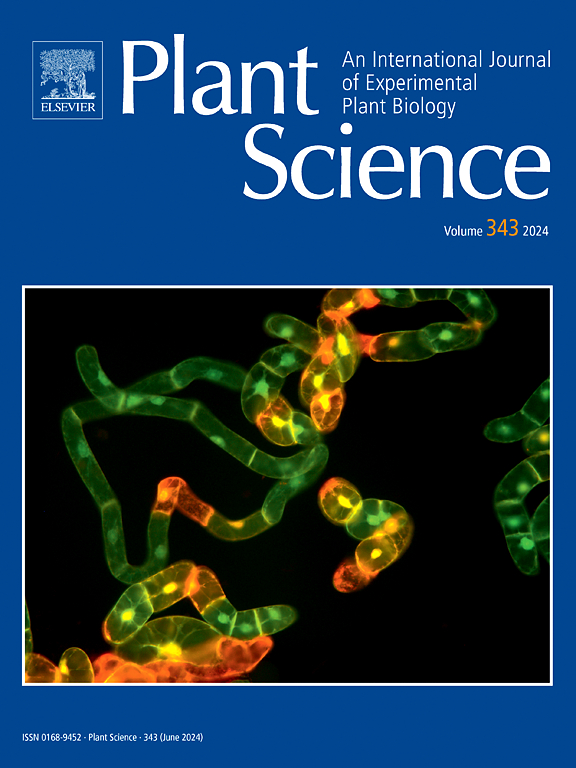osmesl突变体通过抑制OsBI-1导致的细胞死亡来延缓水稻叶片衰老。
IF 4.2
2区 生物学
Q2 BIOCHEMISTRY & MOLECULAR BIOLOGY
引用次数: 0
摘要
水稻萌发后的叶片衰老受到严格的调控,许多潜在的调控机制在很大程度上仍然未知。在这项研究中,我们发现了一个新基因 OsMESL,它对水稻的叶片衰老具有积极的调控作用。T-DNA插入突变体osmesl和RNA干扰植株表现出的表型特征是头后留绿。遗传分析表明,该突变体的表型可通过互补得到挽救,而 OsMESL 的过表达则会加速打顶后的叶片衰老,这突显了 OsMESL 在水稻叶片衰老中的正向调控作用。随后的研究发现,OsMESL通过影响与其相互作用的蛋白--细胞死亡抑制因子OsBI-1的稳定性来调节细胞死亡过程,从而控制叶片衰老。此外,Osmesl突变体的叶片表现出光合作用延迟降低,同时谷粒长度和千粒重增加。总之,我们发现 OsMESL 是一种新型的水稻叶片衰老正调控因子,它可能通过 OsBI-1 对细胞死亡的调控参与叶片衰老,从而导致 osmesl 突变体在打顶后出现留绿表型。本文章由计算机程序翻译,如有差异,请以英文原文为准。
An osmesl mutant delayed rice leaf senescence through inhibiting cell death by OsBI-1
Leaf senescence following heading in rice is subject to rigorous regulation, with many of the underlying control mechanisms remaining largely unknown. In this study, we identified a novel gene, OsMESL, which exerts a positive regulatory effect on leaf senescence in rice. The T-DNA insertion mutant known as osmesl and RNA interference plants displayed a phenotype characterized by stay-green after heading. Genetic analysis indicated that the mutant phenotype could be rescued through complementation, while the overexpression of OsMESL accelerated leaf senescence after heading, underscoring OsMESL's positive regulatory role in rice leaf senescence. Subsequent investigations revealed that OsMESL modulates the process of cell death by influencing the stability of its interacting protein, the cell death suppressor OsBI-1, thereby governing leaf senescence. Furthermore, the leaves of the osmesl mutant exhibited a delayed reduction in photosynthesis, along with increased grain length and 1000-grain weight. In conclusion, we identified OsMESL as a novel positive regulator of leaf senescence in rice, which likely participates in leaf senescence through the mediation of cell death by OsBI-1, resulting in the phenotype of stay-green in the osmesl mutant after heading.
求助全文
通过发布文献求助,成功后即可免费获取论文全文。
去求助
来源期刊

Plant Science
生物-生化与分子生物学
CiteScore
9.10
自引率
1.90%
发文量
322
审稿时长
33 days
期刊介绍:
Plant Science will publish in the minimum of time, research manuscripts as well as commissioned reviews and commentaries recommended by its referees in all areas of experimental plant biology with emphasis in the broad areas of genomics, proteomics, biochemistry (including enzymology), physiology, cell biology, development, genetics, functional plant breeding, systems biology and the interaction of plants with the environment.
Manuscripts for full consideration should be written concisely and essentially as a final report. The main criterion for publication is that the manuscript must contain original and significant insights that lead to a better understanding of fundamental plant biology. Papers centering on plant cell culture should be of interest to a wide audience and methods employed result in a substantial improvement over existing established techniques and approaches. Methods papers are welcome only when the technique(s) described is novel or provides a major advancement of established protocols.
 求助内容:
求助内容: 应助结果提醒方式:
应助结果提醒方式:


